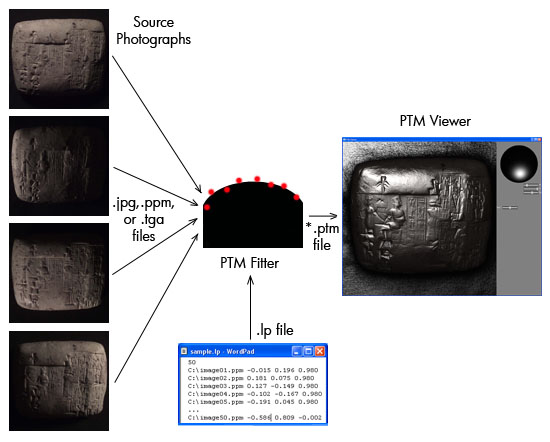|
The appearance of surface varies with lighting conditions. Reflectance imaging is a photographic process that captures views of a surface under varying lighting conditions. For a static object and camera,
view-specific per-pixel reflectance functions can easily be captured and modeled. These reflectance functions can then be changed, using various reflectance transformation methods, to enhance surface detail that may otherwise be difficult to see.
HP Labs' approach uses a simple framework called Polynomial Texture Maps (PTM) to perform reflectance imaging. Source photographs taken at varying lighting directions along with a text file specifying the light directions (*.lp) are read into the PTM Fitter program to create a reflectance image (*.ptm) which captures the variable appearance of the surface. These PTM's can be read with the PTM Viewer application to control light direction and perform enhancements. The Fitter and Viewer applications along with sample files may be freely downloaded. In addition, PTMs
can be dynamically viewed on the web using Java (to view an example,
see
HP's Antikythera Relighting Page,
HP's Interactive Relighting Page, and
Cultural Heritage Imaging's
PTM demo page).
For directions on making your own PTMs from images, click
here.
 |
